Here We Go Again the Chemicals Are Kicking in in Minor Key Fast Version
Proper Animal Handling & Restraint
Fundamentals of Patient Interaction
- Personnel should move around and collaborate with the animal 25-50% slower than their natural inclination. A universal observation I have made in watching people handle animals is that they move too quickly and pay as well piddling attention to what the beast is telling them at whatever moment. Animals almost E'er warn earlier escalating attack or escape, especially dogs. The problem is that we tend to miss these warning signs.
- Doctors and staff should remain calm and neutral no matter how desperately the animate being may comport. Poor behavior should exist ignored; however, any tendency toward better beliefs—no affair how small—should be immediately rewarded in some manner.
- In 98% of cases, injuries to humans occur because someone did something unwise, became complacent while working on the animal, or did non know how to read the animal'due south body language. Remember that behavior is constantly changing. Just because the animate being is friendly at the first of the test or process, does non mean the brute will remain so iii seconds after. Always assume the animal may hurt yous at any time – exist cautious and prudent, simply non paranoid. Always keep your torso parts away from the animal'southward weapons.
- Restraint techniques should never involve whatsoever of the following: physical reprimands of any type (jerking on leashes, hitting or striking the animal, bitter the animal, etc.); pinning the beast's caput or cervix in doorjambs or under your body; alpha rolls; scruff shaking; cuffing under the chin; hanging with leashes or choking the animate being in whatsoever way; or "pile-ups" (having several people grab hold of the animal and pin it to the ground or table).
- Avoid scruffing cats as a routine restraint method. Scruffing alone is actually not a secure way to restraint a true cat, and it aggravates many cats more than necessary. Scruffing does not trigger some magical relaxation in cats. Cats practice have a flexor reflex when picked up by the scruff when they are kittens, but in that location is no biological advantage for an developed cat to go limp when grabbed by the back of the neck. Developed cats are only subjected to this activeness in 4 general contexts: fighting, play fighting, breeding and predatory attacks. Alternative methods can exist more successful.
Interpreting an Creature'due south Body Linguistic communication and Behavior
- Changes in the patient's environment may cause normal behavior patterns to change
- Body language communicated by the brute tin demonstrate clearly how information technology feels toward other animals, people, and its surroundings
- Trunk language can help you make up one's mind how easy or difficult an animal may be during handling and restraint
Patient Restraint Considerations
- Restraint is the process of; holding back, checking, or suppressing an action and/or keeping something nether command using prophylactic and some ways of physical, chemical, or psychological activity.
- Restraint is a necessary tool used by veterinarian staff to permit an beast to be controlled for various procedures
- Rubber of the patient and staff are paramount!
- Sedatives/Tranquilizers – are sometimes necessary to keep a patient calm or pain free during certain stressful procedures or circumstances.
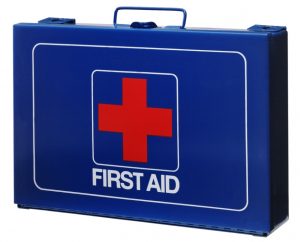 Why Proper Restraint Techniques?
Why Proper Restraint Techniques?
- Prevents injury
- Necessary for examinations and treatments
- More than comfy for animal and handler
- A Kickoff Aid Kit should be available for all bites and scratches
- All Animal bites must be reported to the NY Dept. of Health
Planning the restraint procedure
- When preparing to restrain a patient, ever brand sure the area has enough room, is clean, dry, and well lit
- A programme should be discussed:
- Move any plush equipment
- Nonslip area
- Temperature should be considered
- What should be done if animal happens to become away from restrainer
- Support program (Plan B!)
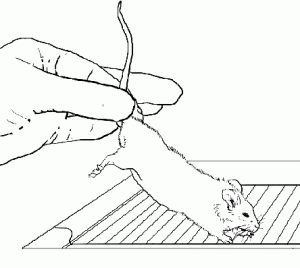 Rodents & Ferret Restraint & Handling
Rodents & Ferret Restraint & Handling
Mice
- Grasp the tail close to the body with one hand
- Use the other manus to grasp loose skin in the cervix and shoulder area.
Larger Rodents and Ferrets
- Make sure the animal is awake to avert bites
- Hold in ane manus, loving cup other over its head
- Wrap thumb and index
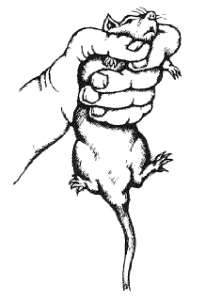
- finger around cervix and under chin
- Practice not over tighten fingers around breast as this can impair breathing
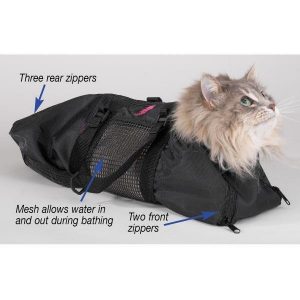 Cats Restraint & Treatment
Cats Restraint & Treatment
- Cats tend to be one of the most difficult during restraint when they become upset and aggressive from stress
- Safely restrain and take control over caput
- Cat bags: control the limbs and head
- Squeeze cages: wire boxes with small-scale slots that allow injections to exist given
- To piece of work around head:
- Wrap or swaddle in a coating or place in "cat bag"
- Allows handler to grasp and hold the back of the head betwixt the thumb and fingers
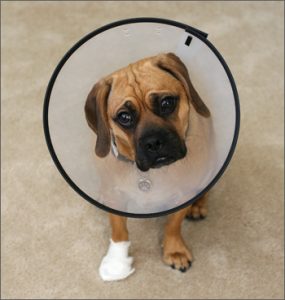 Making an E-neckband – Cone of SHAME
Making an E-neckband – Cone of SHAME
- Measure the pet's neck and the distance from his collar to the tip of his olfactory organ
- Mark these measurements on a piece of rigid cardboard or plastic.
- We're going to use construction paper
- Make a V-shaped cut from the outer border to the inner circumvolve.
- Punch holes along both edges of the neckband.
- Lace a shoe cord or yarn through the holes to secure the collar around your pet's neck.
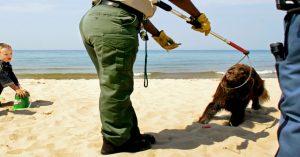 Boosted Canine Techniques
Boosted Canine Techniques
- Rabies pole or snare pole should just be used when absolutely necessary.
- A rabies Pole has a noose on the end, and acts equally a leash
- Captures and restrains dogs
- Pulling tin crusade severe head and neck injuries
Handling Cats
When Attempting to Restrain One Should:
- Use the least amount restraint necessary for patient and staff safety
- Stay at-home and relaxed
- Be firm but not aggressive
- Only attempt when all participants are prepare equally some cats accept a limited corporeality of time they will tolerate handling
- Shut all doors and windows
- Allow the cat to leave its cage or carrier of its own volition if possible
- Scout carefully for warning signs (showtime to growl, swishing the tail) as unlike dogs, cats rarely attack without warning
- Exercise not permit an owner to restrain their ain fearful or aggressive true cat as this may pb to the owner being injured or bit
- Scruffing the true cat by the neck is one manner to control the cat without hurting it
- Consider giving pain medication if the patient is painful or if pain is expected to be induced during a procedure
- Consider chemical restraint/sedation if the patient is overtly aggressive, nervous, or difficult to handle as it may be safer for both the patient and the handler
- Always call back that your rubber is of the utmost importance
Source: https://vmcli.com/continuing-education/proper-animal-handling-restraint/
Post a Comment for "Here We Go Again the Chemicals Are Kicking in in Minor Key Fast Version"